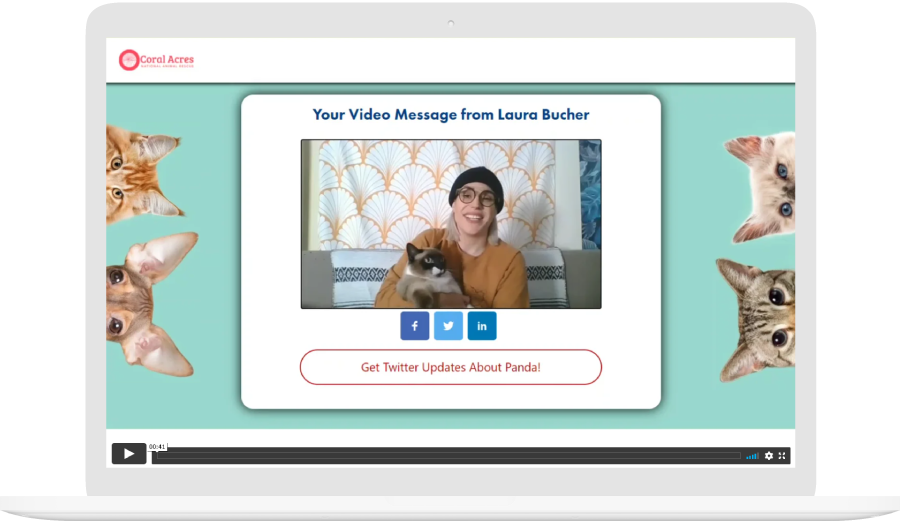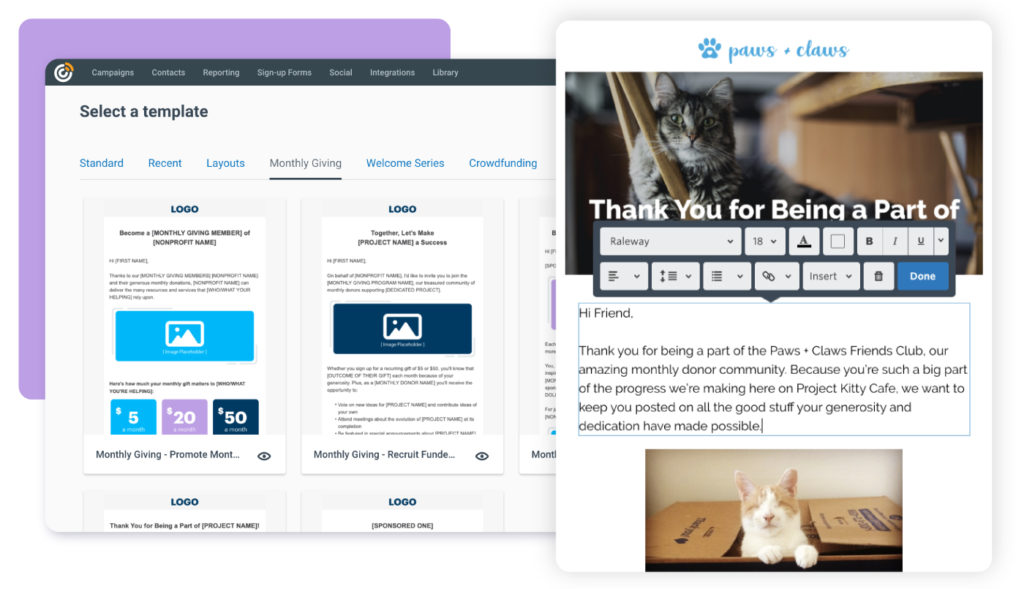Nonprofit Technology & Fundraising Blog
Subscribe to our mailing list

April 7, 2023 | Fundraising Communication, Fundraising Events
How many of us check our inboxes before our feet hit the ground in the morning? Or maybe we take a look in between meetings, in a waiting room, or on our commute to work. The point is, most of us are short on time when we’re scanning through our inboxes.
We start by scrolling through countless emails, quickly tagging those that do not warrant our attention, and deleting them. Next, we comb through the remaining messages, perhaps glancing at the subject line to decide if it necessitates further attention. Finally, we get to the emails that we actually open, and with the short amount of time we have left until the next meeting starts or the nurse calls our name, we have to read the body of the email and decide to act on its contents or not.
How many of us are reading wordy fundraising emails and event invites with any patience? More than likely, if an appeal or invite isn’t reaching us in the first sentence or two, we’re clicking delete and moving on without donating or registering. Keeping your content concise is crucial in getting your donors to take action.
Researchers have crunched the numbers to determine what word count generates the highest favorable results. While the specific figure varies from study to study, they all hover around a very limited word count of about 100 words with the most generous count coming in at 200 words.
To put it into perspective, it takes most people 42 seconds to speak 200 words – and remember that is the maximum suggested word count by any study. So, think of your email content as an elevator pitch.
If you’re looking for an even easier way to get your donor’s attention, try sending a text or video message. This can be especially effective if you’re looking to show special attention to VIP invitees for an upcoming event.

With extremely limited real estate, try to eliminate all non-essentials. There are two critical pieces to any fundraising email that should shine front and center.
What do you need from your donor? Why are you reaching out to them? This should not encompass your whole mission, but a more immediate and concrete need, like an upcoming gala or opportunity to volunteer.
Examples:
We need to shelter and feed 20 homeless pets today.
We’re looking for 15 volunteers to help us host our 25th annual spring gala.
Sending an email to a prospect or first-time donor? If a donor is not as familiar with your organization as another, try segmenting your email list and include some background content in an email to new donors.
What action do you need your donor to take? Your call to action (CTA) should directly relate to and facilitate your donor meeting your needs. For example, if your need is for volunteers, then your CTA should direct donors to a sign-up form.
If your email is an event invite, there are additional critical pieces of information to include:
These factors will have an effect on whether or not they want to learn more details about the event and eventually register. You can leave out any other details and simply link to a resource that will provide them with the relevant information they need, like a page on your website.
Sending a direct mail piece? Use a QR code to easily link your donors to additional online content while keeping your word count limited.
Still having a hard time sticking to a 200 maximum word count? It’s definitely not easy, especially when it’s a cause that you’re passionate and knowledgeable about. What’s important to remember is that if you are successful in getting your donor to act, this won’t be your last opportunity to connect with them and advocate your cause to them. Here are some additional tricks you can try to slim down your text.
Don’t forget there are only two essential elements: your need and your call to action. An introduction falls into the non-essential category. An image of your logo and the sender of the email tells the donor who the email is from and puts your message into context.
If you have a list of things you want to tell your audience, try using bullet points. This eliminates the need for full sentences and allows you to make punchy statements getting to the heart of your message.
Remember your English grammar lessons? Me neither, but this one is important. When using an active voice, the subject of the sentence will be the actor. In the passive voice, the subject is acted upon. The active voice is more powerful and, conveniently enough, shortens sentences as well.
Example:
Passive voice: An email needed to be written by Susan.
Active voice: Susan needed to write an email.
Not a grammar expert? An easy way to identify the passive voice is to look for the words “to be” or “by” in a sentence.
If you write a lot of content, you know editing comes with the territory. Write your email content first without worrying about a limit. This will help you identify what it is you want to say. Then, take a word count and challenge yourself to cut it down by 10% or 15%. If you need help, recruit some proofreaders at your organization to assist you. A second set of eyes can be invaluable.
Need 1,000 more words to get your message across? Pictures are worth about that much. According to Krista Neher, the human brain can process images up to 60,000 times faster than words. That’s a real motivator to use images instead of words for your time-starved donors.
If you’re sending out an invitation to an event, showing a picture from the previous year’s festivities will inform your donor about the atmosphere of the event without having to write a single word.
There are so many (often free) tools to help you with your writing. Here’s a list of a few editors to check out:
Hemingway Editor: This tool helps you identify if you’ve used the passive voice, assigns a grade level so you can simplify your language for a broader audience, and suggests better or shortened phrasing. (There is a paid desktop application, but the online editor is free.)
Essay Biz Lab: This online tool is specifically designed to help shorten your writing.
Purdue Online Writing Lab: If you have extra time to hone your skills, this is an excellent resource to investigate. It even has a whole section on removing extraneous words for more concise sentences.
Writing short and sweet fundraising emails doesn’t have to be hard. Check out DonorPerfect’s New Donor Welcome Kit Email Templates for examples you can copy, paste and personalize for your donors.

Follow us on social!